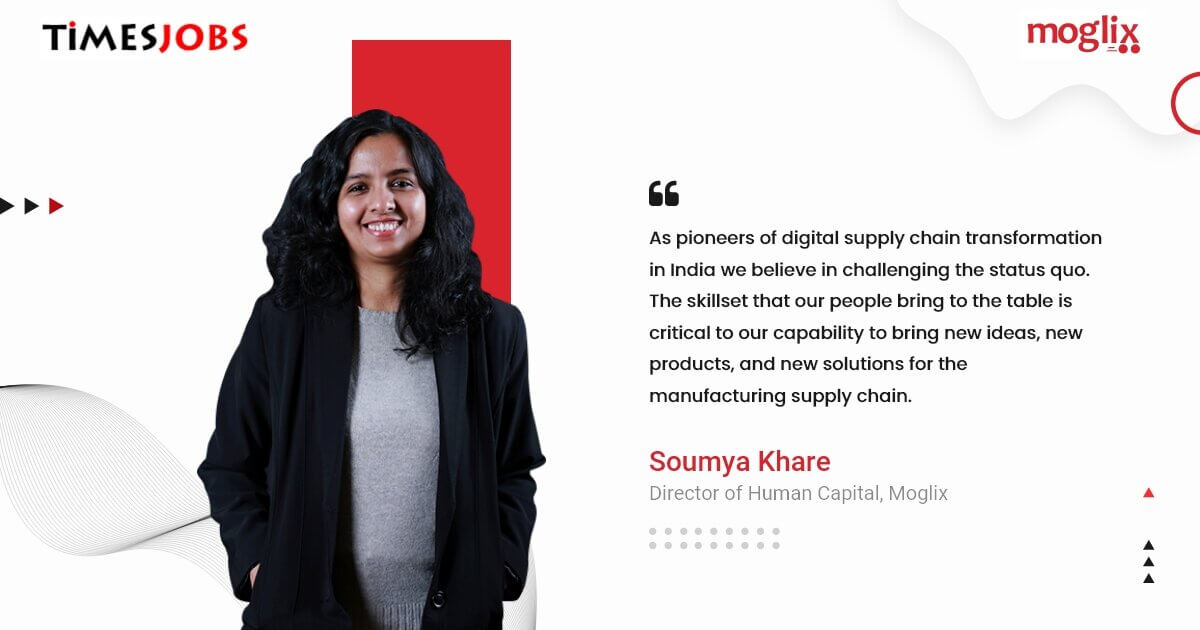Strategic Acquisition, Expansion and Scaling Up: Moglix Growth Action Plan in line

Strategic Acquisition, Expansion and Scaling Up: Moglix Growth Action Plan in line
Business-to-business (B2B) commerce platform Moglix, which stormed into the unicorn club this year after raising fresh funding at a valuation of $1 billion, expects to breakeven in 18-24 months even as it looks to make acquisitions, expand its categories and double down on its Middle East business.
“We have found that while today on the consumer side there is a lot of capability to get lending access in a fast manner from many platforms, the same thing on the B2B side is missing,”
Rahul Garg said
We believe that India has a $150-200 billion worth of financing need in the B2B space and there is at least $30-50 billion worth of need unfulfilled today. If we execute it properly, we are looking at $2 billion to be disbursed annually as part of the platform in 12-18 months.
Talking about his international plan and expansion in UAE, he added
“We entered the Middle East two months back. We have a team and a warehouse there and we are doubling down in the region. On the one hand, we have shipped to more than 120 countries over the last six years. We were shipping pandemic PPE (personal protective equipment) supplies in more than 25 countries. The other dimension is how our full-stack solutions in India are applicable across emerging markets (and how do we take it there).”
Moglix grew at 3x plus over the last 18 months as a company. We continue to scale our offering across multiple categories and there is always the unpredictability of what happens in the next few months but we are on track to grow 2-3x in this financial year. We have provided liquidity during the last two fundraisers to our employees. We cover 25-30% of our employees as part of the ESOP plan. We are continuing to double down. We would have announced Rs 30-40 crore worth of ESOPs. In the last 12 months, we hired more than 500 people. We aim to hire 300-400 people in the next six months. We didn’t do any layoffs during the pandemic.
How Augmented and Virtual Reality is becoming the future of manufacturing?

How Augmented and Virtual Reality is becoming the future of manufacturing?
The applications of AR and VR in various strata of the manufacturing sector can help it grow out of time-consuming, redundant cycles of functioning. AR is bringing precision to production and empowering workers with state-of-the-art methods for efficiency and ease. Through personalised guidance, automated support,better monitoring and analysis of faults & flaws, this technology assists people in focusing on their work and having an eye for detail. The ability of new-age technologies such as AI, Big Data and IoT to make manufacturing smarter and more inventive has received a lot of attention in recent years. And today, the potential of AR for manufacturing is only beginning to be explored, signalling enormous potential. Because of the development of sophisticated technology, every critical activity previously carried out by a time-consuming, manual method is now automated, simplified and painless. It is yet too early to tell if AR and VR investments indicate a coming revolution that will forever change manufacturing as we know it or if early adopters are experimenting. In any case, virtual technology in production is no longer just hype.
Road to the low-cost transition to Net-Zero lies via Value Engineering

Road to the low-cost transition to Net-Zero lies via Value Engineering
The Glasgow Climate Pact has made it clear that there is a universal mandate to get to net-zero emissions. However, each country will have its own timelines and trajectories. Through their regulatory mandates, governments will start clearing out carbon content from the supply chain, making space for green alternatives. Manufacturers will have to roll out innovative solutions with speed and scale to cash in on the opportunities.
Supply chains are subject to the bullwhip effect, where changes and errors accumulated upstream keep amplifying as we travel downstream. The way to accommodate this characteristic of supply chains is to develop digital solutions which allow flexible reallocation of resources and costs in response to real-time carbon emissions.
Optimizing the logistics planning for the delivery of goods for every procurement and distribution transaction is the first step in reducing the carbon footprint. Businesses will have to leverage data to map critical paths, container capacities, and multiple modes of logistics and choose the least cost-green logistics options.
Why is Light-Emitting Cement the New Favorite with EPC Companies

Why is Light-Emitting Cement the New Favorite with EPC Companies
Source – thejupital.com (legend-lights-the-path
Can you picture your walls lighting your space without the need for any electricity? Have you ever considered how difficult it would be to drive and stroll on the roads at night if there are no street lights? Well, it’s time to accept that the technology for sustainable construction materials has advanced in ways we could never have predicted.
Each one of those points listed above is now possible with the advent of light-emitting cement. Light-emitting cement is a sustainable construction material that does not use power to illuminate highways, roads, bicycle lanes, or rooms (if used in construction projects).
Dr Jose Carlos Rubio of the Michoacan University of Saint Nicholas of Hidalgo in Mexico created this groundbreaking cement. The goal of the study was to change the microstructure of cement so that it could absorb solar energy and emit light in the dark.
The phosphorescent materials collect energy from the sun, light from lights or lamps while indoors, and then glow during the dark hours. The cement is said to be able to shine for 12 hours even on cloudy days since the substance gets energised every day with ultraviolet radiation.
Since the gel is formed of sand, dust, clay, and water, it is clean and renewable. Due to the general inorganic nature of the cement components, the material is expected to last for 100 years.
In comparison to existing phosphorescent materials such as plastics or paints, which degrade over time due to UV rays, this novel material is sun-resistant and more lasting. The total carbon footprint of this product is also potentially lower than regular cement. This means there is the potential to save a lot in maintenance costs as lower than contemporary cement.
Engineering, Procurement and Construction (or EPC companies) are turning to unique and sustainable materials for infrastructure development. These sustainable construction materials fit in well with the guidelines outlined within the National Infrastructure Pipeline.
The National Infrastructure Pipeline, or NIP, which will run from 2019 to 2025, is a “first-of-its-kind, whole-of-government effort to offer world-class infrastructure to citizens and improve their quality of life.” Both economic and social infrastructure projects are included by the NIP.
Several countries have expressed interest in light-emitting cement, indicating that there is a commercial need for the material. The research is now being carried out in order to go to the commercialization stage.
The use of light-emitting cement in plaster and other construction materials is also under investigation. It is no wonder that light-emitting cement is now slowly becoming a new part of construction supply chains.
In an interesting application of this cement, after a trial of three months, Netherlands is one of the first to showcase their Glowing Lines project. It is claimed that their roads glow up to eight hours at night. The project is a collaboration between Roosegaarde and Heijmans and is a true example of an innovative industry.
For more information on how Moglix can help you with supply chain solutions for infra companies visit https://business.moglix.com/our-solutions/infrastructure
Unicorn HR leader, Saumya Khare, talks about hiring trends and careers opportunities with startups

Unicorn HR leader, Saumya Khare, talks about hiring trends and careers opportunities with startups
Moglix is a technology-first company. The technology industry respects innovation and innovation at scale mandates skill over and above experience. As pioneers of digital supply chain transformation in India, we believe in challenging the status quo, conducting controlled experiments to explore new solutions that did not exist before. The skill set that our people bring to the table is critical to our capabilities to bring new ideas, new products, and new solutions for the manufacturing supply chain.
Startups have been at the forefront of the new economy, creating tremendous value, creating some of the most amazingly useful and efficient solutions that have saved lives and livelihood of people. Starting your career at a start-up is an accelerator.
While answering to the audience Saumya said
“To understand if a startup will scale up or not, you will have to go beyond the cosmetics and understand the business model. That will help you make an informed choice. All founders want their startups to scale and that is why they are passionate about building it from ground level. Ultimately, you need to judge if you are convinced about the business model & potential and it is aligned with your skill sets”
In the technology industry, new waves of innovation continuously shape the dynamics of who stands where.
To summarize she said “startups offer fantastic opportunities for learning, empowerment while working, opportunities to work in different segments of interest and a very fast paced environment where you can see the direct impact of your work, & are just not a cog in the wheel”
Moglix CEO Rahul Garg talks about Credlix`s growth plans, new acquisition

Moglix CEO Rahul Garg talks about Credlix`s growth plans, new acquisition
Credlix, the digital supply chain financing platform from Moglix, has entered the EXIM financing space, with its acquisition of NuPhi. The acquisition comes shortly after Moglix’s entry into the Middle East region. As Moglix continues to expand globally, it is focusing on strengthening its supply chain financing solutions to enable manufacturers easy access to cash flow for their growth.
NuPhi is a Singapore based fintech start-up offering invoice factoring solutions to MSME exporters in India and SouthEast Asia. Founded in 2019, by Pramit Joshi and Mayur Totla, NuPhi offers cross border financing and SaaS applications to digitalize and automate EXIM workflows.
Elaborating on the decision to enter EXIM financing through the acquisition of NuPhi, CEO & Founder, Moglix, Rahul Garg said “As we continue to grow across verticals and geographies, we are building a single operating system for B2B commerce in the manufacturing sector. We are simplifying the flow of goods and value through our global supply chain to improve the ease of doing business. In NuPhi we have found a great team that is passionate about solving for credit access to MSMEs that is a key bottleneck in the global manufacturing supply chain.”
Takeaways for CPOs from Indian Auto Industry’s Most Successful VMI Program

Takeaways for CPOs from Indian Auto Industry’s Most Successful VMI Program
It’s amazing what a vendor managed inventory system can do to your supply chain. There is a lot to learn from the most successful vendor managed inventory systems for CPOs.
One of Indian auto industry’s leading manufacturers has put in place a successful vendor managed inventory system. The VMI program has enabled it to sustain cost leadership over the long term. Here is an overview of their VMI program.
75% of Components Sourced from Local Suppliers
The auto manufacturer has focused on building strategic relationships with suppliers from the ground up through vendor consolidation. A key aspect of its localization has been to develop captive suppliers that hold inventories at their warehouses.
These suppliers’ warehouses are located within a defined logistical radius. Vendor managed inventory systems allow the auto manufacturer the convenience of on-demand onsite delivery within a short period of time.
100% Visibility into Clean Procurement Data
The auto manufacturer uses an automated inventory replenishment and reordering system. All strategic suppliers have integrated their inventory holding data with that of the single digital procurement solution of the auto manufacturer.
Collaborative data sharing has paved the path for collaborative planning among the auto OEM and its suppliers. Each stakeholder in the supply chain has complete visibility into the evolving dynamics of demand and supply.
JIT Delivery and Lean Inventory Holding
The automotive manufacturer has a well-defined system for suppliers to send their industrial goods to its plant premises. The auto manufacturer allows suppliers’ trucks to enter its plant premises 30 minutes before the scheduled time for stock replenishment.
This has radically reduced working capital blockage. It has also unlocked more real estate for storage of multiple categories of indirect procurement items, and reduced warehousing costs.
6s, Kanban, and Bin Card at Supplier’s Warehouses
The automotive manufacturer conducts periodic visits at its suppliers’ warehouses. During these visits they audit the total quality management systems and best practices of suppliers. As part of the vendor managed inventory program suppliers are required to adopt 6s, kanban and bin card systems at their warehouses.
Moglix provides vendor management inventory solutions that enable both agility at scale and reliability to your indirect procurement. To know more about vendor consolidation and vendor managed inventory solutions for indirect procurement, visit https://blog.business.moglix.com/optimize-mro-procurement
How Can Site Managers Calculate Infra Material Quantities for Concrete

How Can Site Managers Calculate Infra Material Quantities for Concrete
While a project site is a self-contained system, it relies on specific processes to keep things running well. This is where a project manager and their team come in to ensure that each system delivers the needed relationships and output on time and budget.
From managing the staffing to controlling the raw materials that flow in, this is the job of a site manager. Of course, one of the most critical materials used in almost all construction sites is concrete. Depending on construction, a structure may include beams, slabs, columns, and foundations.
The total volumes of each structural element or part of a member will determine the volume of concrete required for this structure. Knowing how much to order is incumbent on understanding the use and volumes needed to complete the structure.
The Application of Concrete in Construction
Concrete consists of coarse aggregates (particulate elements including sand, gravel, crushed stone, and slag) bound together with cement. Cement is a compound that binds things together, such as aggregate, by bonding to them and drying over time. Although many other cement forms exist, Portland cement is the most popular and used in concrete, mortar, and plasters.
Prerequisites for Right Quality Concrete
Proper concrete demands proper mixing for the creation of robust and homogeneous concrete. Concrete production is time-sensitive, and because it is manufactured as a viscous fluid, it must be poured before it hardens.
For applications that demand a short set time, certain concrete is specifically engineered to harden faster. Concrete is also blended into dryer shapes in some manufacturing settings to make precast concrete goods such as concrete walls.
Factors That Improve the Strength of Concrete
The strength of the concrete can be increased during the early stages of curing by keeping it damp. This is accomplished by using procedures such as spraying concrete slabs with chemicals that form a water-retentive coating or ponding, which involves submerging concrete in water and wrapping it in plastic.
Knowing the process and the outcome is essential, as this will determine how to assess the consumption. With this knowledge, the site manager of infrastructure companies can build a bill of materials for all the necessary raw materials.
The Absolute Volume Technique to Calculate Infra Material Quantities
The absolute volume technique can determine the quantities of ingredients for concrete, such as cement, sand, and aggregates, needed to produce the required amount of concrete with given mix proportions.
According to this technique, the volume of fully compacted concrete is equal to the absolute volume of all concrete components, including cement, sand, coarse aggregates, and water.
Site managers, site engineers, civil engineers, and mechanical engineers need to work together to assess the procurement of raw materials. The best way is to use one of the many calculators available freely online. These calculators also highlight the importance of other factors that affect concrete procurement for infrastructure development projects.
What Does the Road Development Boom Mean for EPC Companies

What Does the Road Development Boom Mean for EPC Companies
“My target is to achieve 100 km per day of highway construction,” said Nitin Gadkari, Union Minister for Road, Transport & Highways, addressing a virtual event organized by industry body CII in August of 2021.
This was the road development goal he set for the various EPC companies in India and the different governing agencies to pull up their socks and build using sustainable material, but to also build faster!
The emergence of the National Infrastructure Pipeline is suggestive of what to expect from India’s government going forward.
The National Infrastructure Pipeline (NIP) is a five-year package of social and economic infrastructure projects in India with a total sanctioned budget of 102 lakh crore (US$1.4 trillion). The pipeline was initially announced by India’s Prime Minister Narendra Modi during his Independence Day speech in 2019.
As part of the NIP, roadways, expressways, highways, road construction projects in India, railways and power sector assets will encompass over 66% of the total estimated value of the assets to be monetised. The remaining upcoming sectors include telecom, mining, aviation, ports, natural gas, and petroleum product pipelines, warehouses, and stadiums.
For EPC companies in India, this boom in road development projects means they are now in a position to build back better. However, procurement of construction materials will be critical for them to complete these infrastructure development projects within budgeted time, cost and quality.
Timeliness: EPC companies in India will require an agile supply chain for on-time procurement of construction materials. With a digital procurement solution, they can now streamline their sourcing, logistics, and even payments.
It results in the faster delivery of turnkey projects than a traditional model of offline procurement. Simple aspects like being able to digital monitor the various stages of the logistics journey lead to better visibility into the time to sustain in case of a disruption.
Cost: EPC companies need to ensure they are in the best position to negotiate the best cost. A diverse and inclusive supplier base is the key to getting the most competitive cost quotations on construction materials.
A diverse supplier base managed through a single point of contact enables raw material suppliers to be competitive. EPC companies can get the best product at the lowest price point, without skimping on delivery, quantity, or quality.
Quality: Meeting the custom quality specifications for materials like TMT bars, cement, plates, steel, and ready-mix concrete is critical for EPC companies to build high quality roadways, expressways, highways, and bridges. With clean procurement data, EPC companies can reduce the risks of order-supply mismatches.
EPC companies in India will be the change-makers, enabling transformation and fueling the growth of infrastructure development projects in India.
Being in the unique position to enable the procurement of construction materials such as TMT bars, cement, plates, and ready mix concrete, gives EPC companies an edge to deliver the value that the National Infrastructure Pipeline seeks to create.
If you are in the business of infrastructure, construction, or development, then chances are you will benefit from Moglix procurement solutions for infrastructure development projects. To know more visit https://business.moglix.com/our-solutions/infrastructure
Tesla’s Record Results Despite Supply Chain Disruption

Tesla’s Record Results Despite Supply Chain Disruption
Tesla has weathered its share of supply chain disruptions in a manner “unrivaled in the auto industry”. While other automobile manufacturers have reported a decrease in sales, Tesla has bettered it’s net earnings.
It had posted USD 1.14 billion in the second quarter of 2021. In the third quarter, Tesla posted a record quarterly net earnings of USD 1.62 billion and sales of 240,000 vehicles.
What Tesla Got Right But Others Did Not? Managing Multiple Supply Chain Disruptions
All automobile manufacturers were affected by global semiconductors shortages, which left procurement professionals in the automobile industry short on accessible stock and consumers with fewer options.
Many issues, including semiconductor shortages, port congestion, and rolling blackouts, have hampered automobile manufacturers’ ability to maintain plants functioning at full capacity. Even Tesla has conceded that global supply chain disruptions had made the achievement a little challenging.
However, Tesla got three things right that allowed it to navigate across troubled waters. These are supplier base management, collaboration with suppliers, and better forecasting and planning.
Supplier Base Management and Chip Substitution: Agility at Play
Elon Musk, CEO of Tesla, revealed that the company handled the worldwide chip shortage by upgrading its car software to handle alternate processors.
Due to a growing demand for new automobiles, the gap in supply upended the auto industry. It resulted in factory shutdowns, longer wait times, and higher pricing.
However, Tesla has over the years invested in its supplier base management program. It has built a diverse and inclusive supplier base enabling it to switch to different chips and develop the software in a few weeks.
Working with Vendors to Co-Create a Custom Product: Collaboration in Focus
Tesla was able to quickly put together a custom product. Tesla’s ability to identify the right supplier through a pre-defined approval system enabled it to co-create the customized product in a very short period of time.
It enabled the production, engineering, and supply chain teams to quickly move forward and build the product according to specifications that were pre-set. Tesla’s collaboration with suppliers enabled it to demonstrate agility at scale for its indirect procurement.
Early Visibility for Better Forecasting and Planning: Digital Supply Chain Transformation
Tesla was able to identify the challenges quite early on. Its digitally integrated supply chain with multiple suppliers, logistics services partners, and warehouses onboard worked as an early warning and control system.
Early visibility into the divergence of its supply chain KPIs from expected values allowed it to pierce the mist on the screen. It enabled the automobile manufacturer to forecast and plan better.
To know more about how an indirect procurement solution can work for automobile manufacturers, reach out to Moglix. Explore the best indirect procurement solutions for automobile companies. Click here to know more: https://blog.business.moglix.com/optimize-mro-procurement
